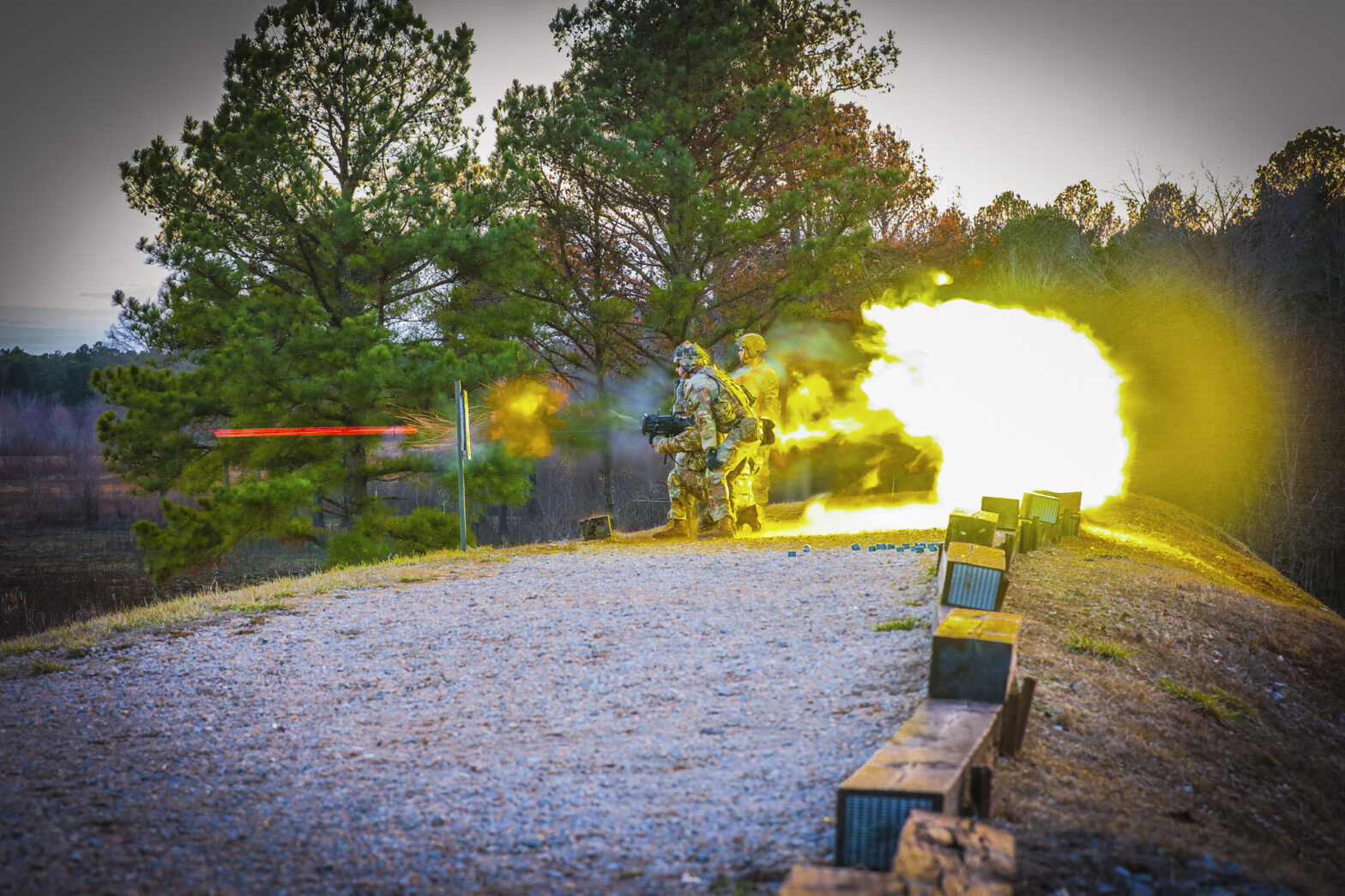A study by Wiri, S. et al. (2024) evaluated blast exposure data from the US Military CONQUER program, specifically the variance in blast overpressure at different positions with det linear breaching charges, explosive breaching water charges, shoulder-fired weapons (Carl Gustaf), and 120-mm mortars. They compared the blast overpressure of initial positioning during the blast to a modified configuration. Below are some of their findings.
Det Linear Breaching Charge
- Initial standoff distance 6ft in front of charge at an acute angle from the building wall.
- Results: max peak overpressure 46.2 kPa
- Modified configuration of 10ft standing around the corner from the blast.
- Results: max peak overpressure 22.1 kPa
Water Breaching Charge
- Initial standoff distance 6ft.
- Results: max peak overpressure 23.4 kPa
- Modified configuration of 10ft standing around the corner from the blast.
- Results: max peak overpressure 6.2 kPa
84-mm Carl Gustaf Firing HEAT TP 552 Round
- Initial position for the range safety officer (RSO) was approximately 1.6ft in front and 5ft to the right of the weapon center.
- Results: max peak overpressure 44.8 kPa
- Modified configuration was 26ft away from the weapon.
- Results: max peak overpressure 6.3 kPa
M120 120-mm Mortar
- Initial position for the assistant gunners was ducking down with head around the level of the muzzle.
- Results: max peak overpressure 29.2 kPa
- Modified configurations were ducking head down to mid-barrel and laying down with head level with the base of the barrel.
- Results: max peak overpressure 20.1 kPa
The recommendation of increasing distance from the blast overpressure in itself isn’t game changing, but quantifying the difference in blast overpressure with different positions is important for mitigating single and cumulative exposures.
Though this information is valuable, it is not applicable unless these modified configurations allow the individuals to maintain their high levels of readiness and lethality.
Subject matter experts in these respective areas are vital to guide what strategies are feasible, and what strategies potentially put lives at risk.
It is through the collaboration of these various perspectives that we can manage the dichotomy of readiness and decrease cumulative blast overpressure exposures.
References:
- Wiri, S., Wagner, C., Longwell, J., Adams, T., Whitty, J., Massow, T., … & Duckworth, J. L. (2024). Significant mitigation of blast overpressure exposure during training by adjustment of body position as demonstrated with field data. Military medicine, 189(5-6), e1154-e1160.
